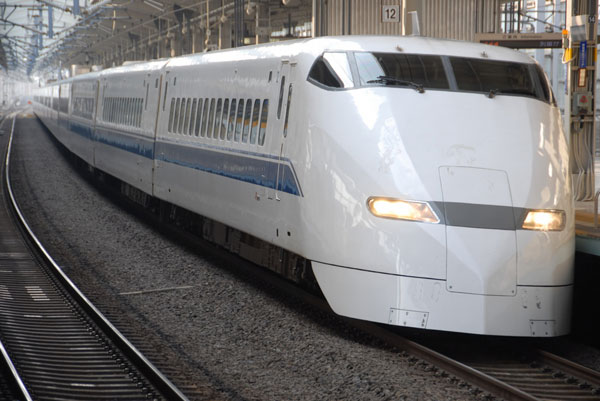California’s high-speed rail plans picked up more momentum
Monday, as the Obama administration announced an additional $368
million to boost rail travel through California.
The grant includes $300 million to stretch the initial
high-speed rail route from just south of Shafter toward Chowchilla,
and $68 million to purchase more rail equipment for existing
lines.
Michael Doyle and John Ellis
California’s high-speed rail plans picked up more momentum Monday, as the Obama administration announced an additional $368 million to boost rail travel through California.
The grant includes $300 million to stretch the initial high-speed rail route from just south of Shafter toward Chowchilla, and $68 million to purchase more rail equipment for existing lines.
California had requested the entire $2 billion that became available when Florida rejected high-speed rail funding. State officials had said that money would allow California to complete the 180-mile backbone of the system, from Bakersfield to Merced.
But federal Transportation Department officials decided to divide the money among nearly two dozen projects.
Rep. Jim Costa, a Fresno Democrat and staunch supporter of the project, nevertheless noted that 90 applicants sought the Sunshine State’s money.
“We got a significant amount of that Florida money,” he said.
Still, two other corridors outdid California on Monday.
The Amtrak Northeast Corridor received an additional $795 million grant and a Midwestern corridor proposed to link Chicago and the cities of Detroit and St. Louis received $404 million.
“These projects will put thousands of Americans to work, save hundreds of thousands of hours for American travelers every year, and boost U.S. manufacturing,” Transportation Secretary Ray LaHood said.
The California money will enable the state to extend its high-speed rail route an additional 20 miles. Transportation Department officials said Monday this will extend the track from Fresno to the planned rail junction near Chowchilla.
California High-Speed Rail Authority officials said the new high-speed rail junction “will provide a connection to San Jose and San Francisco to the west and Merced and ultimately Sacramento to the north.”
Still, the project leaves a 130-mile line that doesn’t quite reach downtown Bakersfield’s proposed station and won’t go far enough north to reach Merced.
Costa said officials still are looking at the rail line’s costs with the hope of connecting Merced to Bakersfield. Besides joining three major Valley cities, it would take a major talking point away from opponents — that the high-speed rail line is a “train to nowhere.”
Starting in January 2010, using a combination of stimulus dollars and Fiscal Year 2010 funds, the Obama administration has awarded California $3.48 billion for high-speed rail work. The state has committed about $2.75 billion in matching funds.
“In the past 15 months, we have won the lion’s share of federal dollars,” said Curt Pringle, chairman of the state’s high-speed rail authority.
The separate $68 million federal grant announced Monday will help the state buy 15 passenger rail cars and four “quick-acceleration” locomotives for use on the Pacific Surfliner, San Joaquin, and Capitol Corridor rail lines.
The new locomotives will be able to travel at speeds up to 125 mph. When constructed, California’s high-speed rail line is supposed to travel up to 220 mph.
Dianne Feinstein and Barbara Boxer, California’s two Democratic senators, had helped urge the Transportation Department to steer more high-speed rail dollars toward California, as had many of the state’s House members.
California officials envision an 800-mile rail system connecting San Diego and Los Angeles to Sacramento and San Francisco. The phase connecting San Francisco to Los Angeles and Anaheim is projected to cost $43 billion.
Construction is supposed to start next year.










